AAQEP Accreditation
Standard 2 Aspect F
Standard 2: Program completers engage in professional practice in educational settings and show that they have the skills and abilities to do so in a variety of additional settings and community/cultural contexts. For example, candidates must have broad and general knowledge of the impact of culture and language on learning, yet they cannot, within the context of any given program, experience working with the entire diversity of student identities, or in all types of school environments.
Candidate preparation includes first-hand professional experience accompanied by reflection that prepares candidates to engage effectively in different contexts they may encounter throughout their careers.
Data Sources & Analysis
Data Source 1
CSU Educator Quality Center Employer Survey
Definition of Data Source:
The CSU Educator Quality Center administered a survey to employers of 2014-2015 and
2015-2016 graduates of CSU educator preparation programs. Results were able to be
disaggregated by both preparatory institution and program. The survey was discontinued
after evaluating the 2015-2016 completers, meaning that all available data are at
least five years old. The California Commission on Teacher Credentialing (CCTC) began
its own employer survey that it first administered in Fall 2019. However, while it
is possible to disaggregate results by institution, it is not possible to do so by
preparation program. In the future, we plan to advocate to the CCTC for the addition
of items to the survey that would allow data to be disaggregated in this way.
Although the data from the CSU Employer Survey are dated, we chose to use the results anyway as one of our three data sources because they do provide an employer perspective on our candidates. Additionally, the results provide us with a baseline to which we can compare results collected in the future.
Employers are invited to respond to each item on a 1-5 scale to indicate their perception of the completers’ level of preparation, with 1 indicating not at all prepared, 2 indicating poorly prepared; 3 indicating adequately prepared; 4 indicating well prepared and 5 indicating very well prepared.
Perspective Captured from Data Source: Employer
Specific Elements of Data Source:
CSU Educator Quality Center Employer Survey item selected to evaluate whether employers
believe the program prepared completers to collaborate with colleagues to support
professional learning was:
- How well prepared was the teacher to collaborate with specialists and parents in the education of students with special needs.
Definition of Success for Each Element:
Programmatically, our goal is that employers of our completers will indicate the teachers
were either “well,” or “very well” in each area.
Displays of Analyzed Data
Figure 1. CSU Educator Quality Center Employer responses items related to 2014-2015 program
completers’ ability to collaborate with colleagues to support professional learning.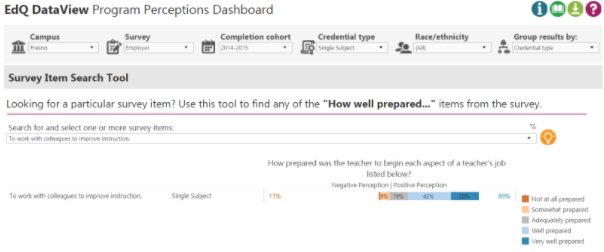
Figure 2. CSU Educator Quality Center Employer responses items related to 2015-2016 program
completers’ ability to collaborate with colleagues to support professional learning.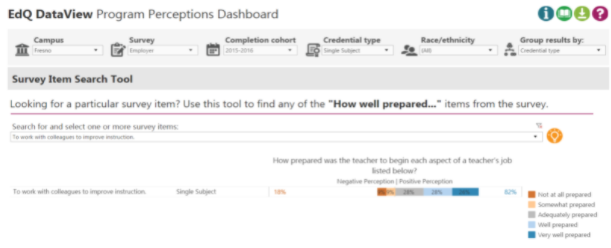
Link to Full Dataset: The link to the full dataset is unavailable. However, if reviewers would like to view the CSU Educator Quality Center Data Dashboards, we are happy to set up a time to provide them access by sharing screens in a Zoom session.
Interpretation of Data:
For the CSU Educator Quality Center survey evaluating the preparedness of completers
from the 2014-2015 cohort of candidates (Figure 1), 89% of the 65 responding employers
indicated an overall positive perception about how well prepared they felt our completers
were to work with colleagues to improve instruction. Of those, 28.00% (n=18) indicated
our candidates as “very well” prepared, 42.20% (n=27) indicated they were “well prepared,”
and 18.80% (n=12) marked them as “adequately” prepared.
For the CSU Educator Quality Center survey evaluating the preparedness of completers from the 2015-2016 cohort of candidates (Figure 1), 82% of the 57 responding employers indicated an overall positive perception about how well prepared they felt our completers were to work with colleagues to improve instruction. Of those, 26.30% (n=15) indicated our candidates were “very well” prepared, 28.10% (n=16) believed they were “well prepared,” and 28.10% (n=16), marked them as “adequately” prepared.
Across both years, findings indicated that the large majority of completers were rated by their employers as “well” prepared on their ability to collaborate with colleagues to support professional learning. Still, it is somewhat concerning that, in the second year the survey was administered, 28% of responders indicated completers were only adequately prepared, and another 18% indicated they were not at all or only somewhat prepared. This may be an area for the program to investigate further.
Data Source 2
CCTC Program Completer Survey
Description of Data Source:
The California Commission on Teacher Credentialing administers a survey annually to
all individuals in the state when they apply for a credential. The survey seeks to
collect candidates’ perceptions of their preparation program and is organized under
the six domains of the Teaching Performance Expectations (TPEs).
CCTC Program Completers responded to each survey item on a 1-5 scale, with 1 indicating “not at all” prepared, 2 indicating “poorly” prepared; 3 indicating “adequately” prepared; 4 indicating “well” prepared, and 5 indicating “very well” prepared.
Perspective Captured from Data Source: Program Completer
Rationale for using Data Source:
Although the survey gathers data from candidates at the time they complete the program,
we believe that their perceptions of the program at this point help us to know if
they feel ready to collaborate with colleagues to support professional learning. CCTC
Program Completers responded to each survey item on a 1-5 scale, with 1 indicating
“not at all” prepared, ” 2 indicating “poorly” prepared; 3 indicating “adequately”
prepared; 4 indicating “well” prepared, and 5 indicating “very well” prepared.
Specific Elements of the Data Source:
CCTC Program Completer Survey items selected include:
- How well did the program prepare you to work with colleagues to improve instruction?
Definition of Success for Each Element:
Programmatically, our goal is for our candidates to say they were either “well,”
or “very well” prepared after they have completed the program.
Displays of Analyzed Data
Table 1. Responses to CCTC Completer Survey items related to collaborating with colleagues to support professional learning (Full Dataset)
| Rating | 2016-2017 (n=79) |
2017-2018 (n=185) |
2018-2019 (n=178) |
2019-2020 (n=164) |
|---|---|---|---|---|
| Not at all | 0 (0.0%) | 3 (1.6%) | 1 (0.6%) | 1 (0.6%) |
| Poorly | 5 (6.3%) | 7 (3.8%) | 9 (5.1%) | 6 (3.7%) |
| Adequately | 18 (22.8%) | 42 (22.7%) | 39 (21.9%) | 31 (18.9%) |
| Well | 25 (31.6%) | 61 (33.0%) | 57 (32.0%) | 61 (37.2%) |
| Very well | 31 (39.2%) | 72 (38.9%) | 72 (40.4%) | 65 (39.6%) |
Interpretation of Data:
For the 2016-2017 CCTC Program Completer survey, findings indicated that 94% of respondents
believed they were “prepared” to work with colleagues to improve instruction. Of
these 79 respondents, 39.2% (n=31) indicated they were “very well” prepared, 31.6%
(n=25) believed they were “well prepared,” and 22.8% (n=18) marked themselves as “adequately”
prepared.
For the 2017-2018 CCTC Program Completer surveys, findings indicated that 95% of respondents believed they were “prepared” to work with colleagues to improve instruction. Of these 185 respondents, 38.9% (n=72) indicated they were “very well” prepared, 33.0% (n=61) believed they were “well prepared,” and 22.7% (n=42) marked themselves as “adequately” prepared.
For the 2018-2019 CCTC Program Completer surveys, findings indicated that 94% of respondents believed they were “prepared” to work with colleagues to improve instruction. Of these 178 respondents, 40.4% (n=72) indicated they were “very well” prepared, 32.0% (n=57) believed they were “well prepared,” and 21.9% (n=39), marked themselves as “adequately” prepared.
For the 2019-2020 CCTC Program Completer surveys, findings indicated that 95% of respondents believed they were “prepared” to work with colleagues to improve instruction. Of these 164 respondents, 39.6% (n=65) rated themselves as “very well” prepared, 37.2% (n=61) felt “well prepared,” and 19.9% (n=31), marked themselves as “adequately” prepared.
Looking across the four years of data indicates that nearly 40% of completers consistently indicated they were very well prepared to collaborate with colleagues to improve instruction. Similarly, nearly 20% of respondents indicated they were only adequately prepared, though that percentage did decline with each cohort.
Data Source 3
CSU Educator Quality Center Year One Teacher Survey
Description of Data Source:
For candidates who completed a CSU educator preparation program each academic year
from 2014-2015 to 2017-2018, the CSU Educator Quality Center administered a year-out
survey to learn how well the educators, after their first year in the field, believed
the program had prepared them. Year One Teachers respond to each item on a 1-5 scale,
where 1 indicates they were not at all prepared, 2 indicates they were poorly prepared;
3 indicates they were adequately prepared; 4 indicates they were well prepared and
5 indicates they were very well prepared.
Due to the challenges of educators in Spring 2020, the CSU Educator Quality chose not to administer the survey at that time, meaning data are not available for candidates who completed in 2018-2019. Survey administration began again in Spring 2021, and we look forward to analyzing those data when they become available.
Perspective Captured from Data Source: Year One Teacher
Rationale for using Data Source:
The CSU Educator Quality Center survey captures the perspectives of program completers
after their first year of teaching. Items on the survey invite candidates to share
how well they believe the program prepared them in several key areas.
Specific Elements of Data Source:
The CSU Educator Quality Center Survey item selected to evaluate whether the program
prepared completers to collaborate with colleagues to support professional learning
was:
- How well prepared were you to collaborate with specialists and parents in the education of students with special needs?
This question was selected as it demonstrates that our candidates must engage in professional collaborations in order to support their students’ learning.
Definition of Success for Each Element:
Programmatically, our goal is for all candidates to say they were either “well,” or
“very well” prepared one year-out once they exit the program.
Displays of Analyzed Data
Figure 3. 2016-2017 Year One Teacher Survey Responses from 2015-2016 Completers (n=57) for
Program Perception Items Related to Collaborating with Colleagues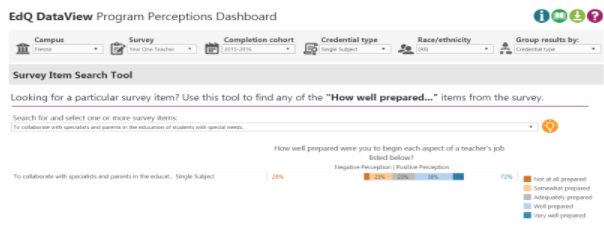
Figure 4. 2017-2018 Year One Teacher Survey Responses from 2016-2017 Completers (n=38) for Program
Perception Items Related to Collaborating with Colleagues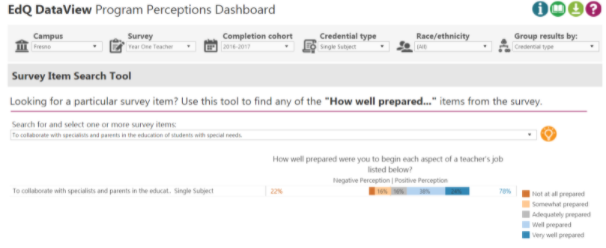
Figure 5. 2018-2019 Year One Teacher Survey Responses from 2017-2018 (n=51) Completers for Program
Perception Items Related to Collaborating with Colleagues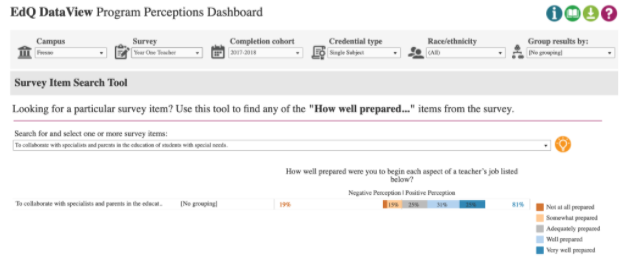
Link to Full Dataset: The link to the full dataset is unavailable. However, if reviewers would like to view the CSU Educator Quality Center Data Dashboards, we are happy to set up a time to provide them access by sharing screens in a Zoom session.
Interpretation of Data:
For the 2016-2017 survey of 2015-2016 program completers (Figure 3), 72% of the 53 responders indicated they were “prepared” to collaborate with specialists
and parents in the education of students with special needs. Of those, 11.30% (n=6)
rated themselves as “very well” prepared, 37.70% (n=20) believed they were “well prepared,”
and 22.60% (n=12) indicated they were “adequately” prepared.
For the 2017-2018 survey of 2016-2017 program completers (Figure 4), 78% of the 37 responders indicated they were “prepared” to collaborate with specialists and parents in the education of students with special needs. Of those, 24.30% (n=9) rated themselves as “very well” prepared, 37.80% (n=14) indicated they were “well prepared,” and 16.20% (n=6), marked themselves as “adequately” prepared.
For the 2018-2019 survey of 2017-2018 program completers (Figure 5), 81% of the 48 responders indicated they were “prepared” to collaborate with specialists and parents in the education of students with special needs. Of those, 26.00% (n=12) rated themselves as “very well” prepared, 31.30% (n=15) believed they were “well prepared,” and 25.00% (n=12) indicated they were “adequately” prepared.
While findings are overall positive, it is worth noting that 25% of responders in 2018-2019 indicated they were only adequately prepared to engage in professional collaborations to support students’ learning. This may be an area the program needs to examine further to ensure that all completers believe they are prepared.
Next Steps:
Overall, our program completers leave the program with a sense of having the ability
to collaborate with colleagues to support professional learning; however, it is interesting
to note that “on average” the Year One Teacher respondents on the CSU Educator Quality
Center (EdQ) survey rated themselves as “adequately prepared” (78%); whereas, the
employer respondents from the EDQ survey rated our program completers as “well prepared”
(85.5%), and the CCTC program completer respondents rated themselves as “very well”
prepared (94.6%). Why is this so? Is it because Year One Teachers inherently rate
their actual performance rather than their ability? Or, is it because Year One Teachers
are in the throes of their first year teaching? In either case, the program needs
to further investigate this occurrence.
In order to address what we found, the program will need to correlate the data and the activities conducted in our program courses that specifically addresses collaboration with specialists and parents in the education of students with special needs.